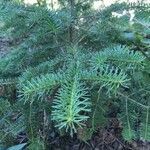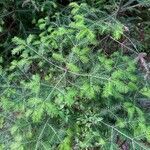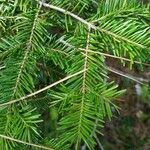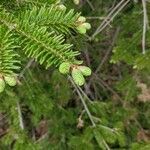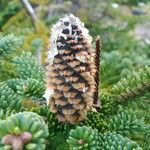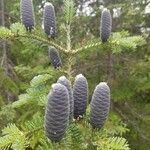Spire-topped tree to 25 m, the gray bark eventually becoming scaly; twigs minutely hairy; lvs 12–25 mm; blunt or minutely notched, twisted at the base and tending to lie in one plane; cones 5–10 cm, with broadly rounded, appressed scales; bracts stipitate, the blade quadrate to rotund, mucronate to aristate, included or occasionally shortly exserted, but only rarely exceeding the subtended scale, the exserted part, when present, sometimes spreading, but not reflexed. Moist woods and swamps; Nf. and Lab. to the Mackenzie Valley, s. to N.Y., Mich., Minn., and in the mts. to W.Va. and n. Va.
A tree shaped like a cone. It grows 15 m high and spreads 5 m across. The bark is smooth and grey. There are resin blisters on the bark. The leaves are dark green but whitish underneath. The leaves are 1.5-2.5 cm long. They are densely arranged in the shoots in a V shape. The cones are oblong and purple. They are 5-8 cm long.
